Why Your Wellness Tech Deserves a Little TLC?
A red light therapy (RLT) device is not just another tech gadget — it is a meaningful investment in your health and recovery and overall well-being. Whether you are using it to bring your skin back to life, help muscles repair, or just need a boost in mood, it's part of your routine; it plays a vital role in your holistic routine[1].
Your RLT device, similar to any high-performance wellness tool, does require regular maintenance in order for it to perform optimally. Ignoring the routine maintenance can lead to reduced light output, potential safety risks, and expensive repairs. Fortunately, with routine care of devices, you can keep using your red light therapy smoothly for years!
This post will provide straightforward instructions on how to keep your RLT device in top shape.
Take these simple steps to protect your investment and to ensure every session is as safe, effective, and powerful as the first.

The Golden Rules of Gentle and Effective Cleaning
Proper cleaning of the RLT device directly affects therapy effectiveness. RLT device output and efficacy can be compromised by dust, oils, and smudges. Here is how to keep your devices clean.
Step-by-Step Cleaning Instructions
- Unplug First: Before cleaning the device, turn it off.
- Regular Dusting: Lightly wipe the surface and LEDs with a dry soft microfiber cloth. This picks up dust and lint without scratching.
- Deeper Cleaning: Lightly dampen the cloth with water or a mild, non-abrasive soap solution. Do not use harsh chemicals or alcohol-based cleaners, as they can seep into the internal electronics and damage the system.
- No Direct Spraying: Do not spread solid or liquid directly onto the device. Always apply the cleaning liquid first to the clothes.
Keep Your LEDs Bright for Maximum Light Output
The real power of the red light therapy device is hidden in its LED lights. These are the diodes that emit those therapeutic wavelengths, which carry all of the benefits from circulation to collagen stimulation! [2] Even a thin layer of dust or natural oils from your skin can diminish the intensity of light, reducing the therapy effect over time. [3] Regular, light cleaning of LEDs allows your device to produce maximum light output, maintaining the treatment output across every session.
Tips For LED Care
- Clean the LED surface with a microfiber cloth, which must be clean and dry.
- Be careful not to put pressure on the LED, as this can loosen the internal components.
- Do not apply water and soap directly on LEDs, unless instructed by the manufacturer.
- Do not touch the diode surfaces with your fingers when you are handling them.
Smart Storage to Protect Your RLT Investment
Where and how you store your red light therapy instruments after use significantly impacts the device output and lifespan. Store it in a cool, dry place and keep it away from direct sunlight.
Humidity in places like bathrooms or damp environments can seep into the internal components and lead to corrosion or electrical issues. Similarly, exposure to extreme temperatures, whether from a heater or cold drafts, can warp plastic casings or interfere with devices; laptops are way too sensitive electronics.
Keeping the device in the original box or a dedicated, protected casing is the best way to store it. In this way, the device gets an extra layer of protection from scratches and accidental bumps. However, if your device has adjustable stands, mounts, or detachable parts, store them securely and do not stack heavy objects on top. These simple habits will significantly reduce the risk of the instruments' physical wear and tear.
Handle With Care to Prevent Accidental Damage
Even if your RLT device feels sturdy and well-built, it still has fragile parts inside, which can be damaged with mishandling.
Handle Your Device Like A Pro
- Carry it securely: Always hold the device by its sturdy, fixed parts not from the cord.
- Mind the power cord: Do not yank the cord from the outlet or device. Gently unplug using the plug itself.
- Do not wrap it too tightly: Power cords can develop internal wire breakage when they are coiled tightly.
- Adjusting the Stand or Mount: Do it gently by following the manual instructions. Forcing heavy parts can strip screws or weaken hinges.
Your Regular Power and Cord Safety Check
One of the simplest preventative maintenance practices you can do is to visually inspect the power cord and plug. Check the length of the cord once a week for any kind of wear, like fraying, cracking, or exposed wires. This is an early warning that the cord may be at risk of failure or could become a safety hazard.
Make sure the power cord is securely inserted in both the device and the wall outlet. A loose connection can lead the device to flicker or shut off unexpectedly, which can potentially harm the internal circuitry. If anything seems loose or the device is not powering on consistently, stop using it and investigate the problem prior to using it.

Simple Fixes for Common RLT Glitches
Not every problem with your red light therapy device needs a visit to the repair shop. Many small problems can be fixed with a few checks.
Troubleshooting Basics
Device won't turn on? Make sure it is plugged into a working outlet.
- Check the Power Switch — Behind or under the removable control panel, devices have a toggle on the back or the bottom.
- Check to make sure those cords are plugged in tightly where they connect (even on the adapter ends).
- Check all cord connections (including adapter ends) are secure.
- Are LEDs flickering or dimming? Clean the light panel and ensure that it receives a consistent supply of power.
When to Consult Your User Manual or Support
There will be times when a deeper issue arises — and that's when your user manual becomes your most important aid. However, if you notice a large number of LEDs in one section not working (or it emits strange noises, smells, or heat), it is best to stop using the device immediately. These are signs that something in the device is malfunctioning, and it could worsen the problem or even pose a safety risk.
Before reaching out to customer support, make sure to check the troubleshooting part of your manual. Most manuals include the solutions for common problems, including diagrams to help you identify parts. If the issue persists, contact the manufacturer’s support team with details about the problem, your purchase date, and any warranty information you have on hand.
A Few Minutes of Care for Years of Performance
Taking care of your red light therapy device does not require a special tool or take up much of your time. In fact, a few minutes of basic care every week can make a big difference in how long the device lasts and how well it works.
Wiping it down, keeping the lights clean, storing it in a safe place, and checking the power cord every now and then helps ensure that every session stays both safe and potent. Taking these small steps protects your investment and helps you receive the optimal results each time you use it.
So do not wait until something goes wrong. Start caring for your RLT device today — it's a simple habit that brings long-term benefits.
References
- Cleveland Clinic. “Red Light Therapy: Benefits, Side Effects & Uses.” Cleveland Clinic, 1 Dec. 2021, my.clevelandclinic.org/health/articles/22114-red-light-therapy.
- Cohen M, Austin E, Masub N, Kurtti A, George C, Jagdeo J. Home-based devices in dermatology: a systematic review of safety and efficacy. Arch Dermatol Res. 2022 Apr;314(3):239-246. doi: 10.1007/s00403-021-02231-0. Epub 2021 May 3. PMID: 33938981; PMCID: PMC8918178.
- Ablon G. Phototherapy with Light Emitting Diodes: Treating a Broad Range of Medical and Aesthetic Conditions in Dermatology. J Clin Aesthet Dermatol. 2018 Feb;11(2):21-27. Epub 2018 Feb 1. PMID: 29552272; PMCID: PMC5843358.



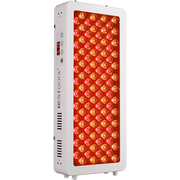









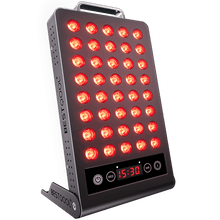
 Small
Small
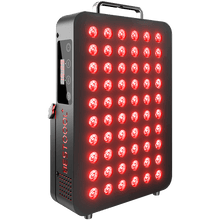
 Moderate
Moderate
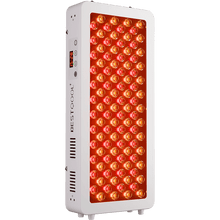
 Moderate
Moderate
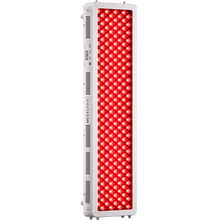
 Moderate
Moderate

 Full
Full



